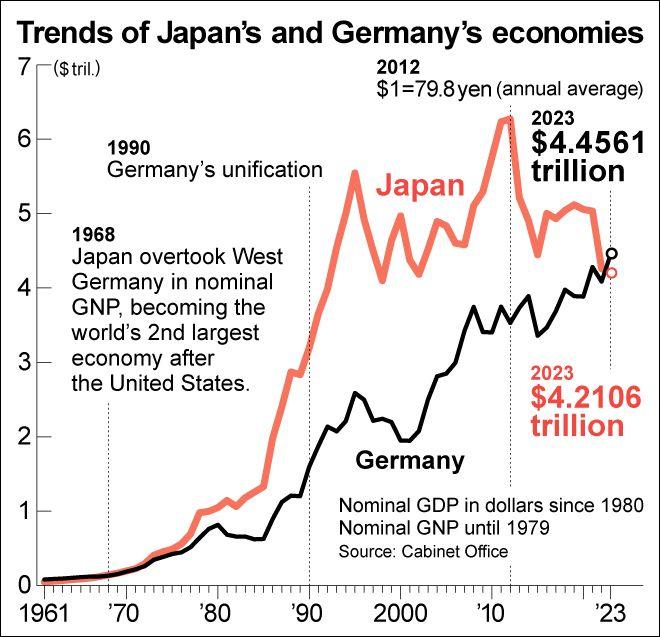Japan’s Economic Contraction: A New Challenge for Recovery Efforts
In a notable shift, Japan’s economy has experienced its first contraction in over a year, raising alarms among economists and government officials. The latest findings from the Wall Street Journal indicate that this decline in gross domestic product (GDP) represents a significant setback for a country that had recently shown signs of economic revival after an extended phase of stagnation. This unforeseen downturn is linked to various factors, including decreased consumer spending, lower investment levels, and persistent global supply chain disruptions. As Japan confronts this economic hurdle, concerns arise regarding the durability of its recovery and the potential effects on the wider Asian economy. With inflationary pressures continuing to mount and geopolitical tensions escalating, analysts are keenly observing how both the government and central bank will address this concerning situation.
Decline in Consumer Expenditure Impacts Japan’s Economy
Japan’s recent economic contraction can be largely attributed to a significant drop in consumer expenditure. Recent statistics reveal that households are tightening their budgets due to rising living expenses, resulting in reduced overall consumption levels. Economic experts highlight several key factors contributing to this trend:
- Surging prices for essential goods and services
- Stagnant wages failing to keep pace with inflation rates
- Increased uncertainty stemming from global economic conditions
This decline in consumer spending raises serious concerns about Japan’s recovery path as it navigates through post-pandemic challenges. Given that household consumption accounts for more than half of the nation’s GDP, any reduction poses significant implications for growth prospects. Analysts caution that if these trends persist, they could hinder future growth opportunities and lead to broader economic consequences. A recent study outlines potential impacts as follows:
| Impact Area | Expected Outcome | ||
|---|---|---|---|
| Diminished retail sales figures | A projected 1.5% decrease by year-end | ||
| Reduced business investments | A forecasted 2% drop in Q1 2024Rising unemployment rates | An anticipated increase up to 3.5% |
Global Inflation’s Effects on Japan’s Economic Landscape
The resurgence of inflation across international markets has posed considerable challenges for Japan as it grapples with escalating prices while striving for economic stability.
- The following factors have significantly influenced this downturn:
Navigating these hurdles requires Japanese policymakers to strike a delicate balance between fostering growth while managing inflationary pressures effectively.
- This includes exploring various strategies such as:
| Economic Indicator | Current Status | ||
|---|---|---|---|
| GDP Growth | -0 .4 % (Quarter-on-Quarter)< td /> | ||
| Consumer Price Index< td | 3 .3 % Year-on-Year< td /> | ||
| Yen against USD Exchange Rate< td | 150 JPY< td /> | ||
| Sector | Recovery Strategy | ||
